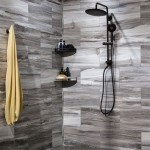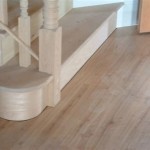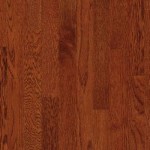Linoleum Flooring Roll: A Comprehensive Guide
Linoleum flooring roll, a resilient and versatile flooring option, has been a staple in residential and commercial spaces for over a century. Its durability, sustainability, and wide range of design possibilities contribute to its enduring appeal. This article provides a detailed exploration of linoleum flooring roll, covering its composition, manufacturing process, advantages, disadvantages, installation, maintenance, and applications.
The term "linoleum" is often mistakenly used interchangeably with "vinyl," but these are distinct materials. Linoleum is a natural product, while vinyl is synthetic. Understanding this fundamental difference is crucial when evaluating flooring options based on environmental impact and performance characteristics.
Composition and Manufacturing
Linoleum's composition is primarily based on natural, renewable resources. The core ingredients include: linseed oil, obtained from flax seeds; rosin, a resin extracted from pine trees; wood flour, finely ground wood particles; limestone, a plentiful mineral; and pigments, which provide the desired color and pattern. These ingredients are mixed and then applied to a jute backing.
The manufacturing process begins with oxidizing the linseed oil, transforming it into a thick substance called linoleum cement. This cement is then combined with the rosin, wood flour, and limestone. Pigments are added to achieve the desired aesthetic. The resulting mixture is then calendered, a process involving pressing the material between heavy rollers to create a uniform sheet. This sheet is then adhered to the jute backing and dried or cured for several weeks, allowing the linoleum to harden and develop its characteristic resilience. The curing process can be accelerated using controlled heat and humidity environments.
Modern manufacturing techniques have refined this process, enabling the creation of more intricate patterns and textures. Computer-controlled machinery ensures precise application of materials and even distribution of pigments, resulting in consistent quality and design.
Advantages of Linoleum Flooring Roll
Linoleum flooring roll offers numerous advantages that make it a compelling choice for various applications. These advantages include its durability, sustainability, versatility, and ease of maintenance.
Durability: Linoleum is exceptionally durable and can withstand heavy foot traffic, making it suitable for high-traffic areas such as hallways, kitchens, and commercial spaces. Its inherent resilience allows it to resist scratches, dents, and stains. The color runs throughout the entire thickness of the material, meaning that scratches and wear are less noticeable than with surface-printed alternatives. With proper maintenance, linoleum flooring can last for decades.
Sustainability: As a natural product made from renewable resources, linoleum is an environmentally friendly flooring option. It is biodegradable and does not emit harmful volatile organic compounds (VOCs) after installation. This makes it a healthier choice for indoor air quality, particularly beneficial for individuals with allergies or sensitivities. The use of sustainable materials contributes to a lower carbon footprint compared to synthetic flooring options.
Versatility: Linoleum flooring roll is available in a wide range of colors, patterns, and textures, offering designers and homeowners considerable creative freedom. From classic marbled designs to contemporary geometric patterns, linoleum can complement a variety of interior styles. The material can also be cut and shaped to create custom designs and borders, adding a unique touch to any space.
Ease of Maintenance: Linoleum is relatively easy to clean and maintain. Regular sweeping or vacuuming is sufficient to remove loose dirt and debris. For more thorough cleaning, a damp mop with a mild detergent can be used. The surface is resistant to staining and spills, making it a practical choice for busy households and commercial environments. Periodic waxing or polishing can help to maintain the floor's shine and protect it from wear.
Antimicrobial Properties: Linseed oil, a key component of linoleum, possesses natural antimicrobial properties. This helps to inhibit the growth of bacteria and other microorganisms, making linoleum a hygienic flooring option, particularly suitable for hospitals, schools, and other environments where cleanliness is paramount. While not a substitute for regular cleaning, the antimicrobial properties contribute to a healthier indoor environment.
Disadvantages of Linoleum Flooring Roll
While linoleum offers many advantages, it also has some drawbacks that should be considered before making a purchasing decision. These disadvantages include its initial cost, installation complexity, susceptibility to indentation, and potential for discoloration.
Initial Cost: Linoleum flooring roll can be more expensive than some other flooring options, such as vinyl sheet flooring. The higher cost is due to the natural materials and the manufacturing process. However, the long lifespan and durability of linoleum can offset the initial investment over time.
Installation Complexity: Installing linoleum flooring roll requires specialized skills and tools. Proper subfloor preparation is essential to ensure a smooth and level surface. Seams must be carefully sealed to prevent moisture from penetrating the flooring. Improper installation can lead to bubbling, cracking, and other problems. It is generally recommended to hire a professional installer to ensure a successful and long-lasting result.
Susceptibility to Indentation: While linoleum is durable, it can be susceptible to indentation from heavy furniture or appliances. Using furniture pads under heavy objects can help to prevent indentations. Over time, indentations may become permanent, particularly in areas with prolonged exposure to heavy weight.
Potential for Discoloration: Linoleum can be susceptible to discoloration from prolonged exposure to sunlight or certain chemicals. UV rays can cause the colors to fade or yellow over time. Harsh cleaning agents or solvents can also damage the surface and cause discoloration. Using window treatments to reduce sunlight exposure and avoiding harsh chemicals can help to prevent discoloration.
Seam Visibility: Depending on the pattern and installation technique, seams in linoleum flooring roll can be visible. This is particularly noticeable in large rooms or areas with intricate designs. Careful planning and precise installation can minimize seam visibility, but it is often unavoidable. Some manufacturers offer seam welding techniques that fuse the seams together, creating a virtually seamless surface.
Installation Process
The installation of linoleum flooring roll is a critical step in ensuring its longevity and performance. Proper preparation and execution are essential for achieving a smooth, durable, and aesthetically pleasing result. The installation process typically involves several key steps:
Subfloor Preparation: The subfloor must be clean, dry, level, and free of any imperfections. Any cracks, holes, or unevenness must be repaired or filled before proceeding. A plywood or concrete subfloor is generally suitable for linoleum installation. It is important to ensure that the subfloor is properly secured to prevent movement or instability.
Acclimation: The linoleum flooring roll should be acclimated to the room's temperature and humidity for at least 24 to 48 hours before installation. This allows the material to expand or contract, preventing buckling or warping after installation. The room temperature should be maintained within the manufacturer's recommended range during acclimation.
Cutting and Fitting: The linoleum flooring roll is carefully unrolled and measured to fit the room's dimensions. An allowance should be made for trimming and waste. The material is then cut to size using a sharp utility knife or linoleum cutter. Precise cutting is essential for achieving a seamless and professional-looking installation.
Adhesive Application: A specialized linoleum adhesive is applied to the subfloor using a notched trowel. The adhesive should be applied evenly and according to the manufacturer's instructions. The amount of adhesive used will depend on the type of linoleum and the subfloor material. It is important to use the correct type of adhesive to ensure proper bonding.
Rolling and Seaming: The linoleum flooring roll is carefully rolled into place, ensuring that it is properly aligned with the walls and seams. A heavy roller is used to press the linoleum firmly into the adhesive, removing any air pockets and ensuring a strong bond. Seams are carefully aligned and sealed using a seam sealer or welding technique, depending on the manufacturer's recommendations.
Finishing: After the adhesive has dried completely, the excess linoleum is trimmed along the edges of the room. Baseboards or moldings are then installed to cover the edges and provide a finished look. The floor is then cleaned and inspected for any imperfections or areas that require additional attention.
Maintenance and Care
Proper maintenance and care are essential for prolonging the life and appearance of linoleum flooring roll. Regular cleaning and preventative measures can help to protect the floor from damage and maintain its aesthetic appeal.
Regular Cleaning: Sweep or vacuum the floor regularly to remove loose dirt, dust, and debris. This prevents abrasive particles from scratching the surface. Use a soft-bristled broom or a vacuum cleaner with a floor brush attachment.
Damp Mopping: Mop the floor with a damp mop and a mild detergent solution. Avoid using excessive water, as this can seep into the seams and damage the subfloor. Use a pH-neutral cleaner specifically designed for linoleum flooring. Rinse the floor with clean water to remove any detergent residue.
Spill Cleanup: Clean up spills immediately to prevent staining. Use a clean cloth or paper towel to blot the spill. Avoid rubbing, as this can spread the stain. For stubborn stains, use a mild cleaning solution or a specialized stain remover.
Protective Measures: Use furniture pads under heavy furniture to prevent indentations. Place mats or rugs in high-traffic areas to protect the floor from wear and tear. Avoid wearing shoes with sharp heels or cleats on the floor. Use window treatments to reduce exposure to sunlight and prevent fading.
Periodic Maintenance: Depending on the level of traffic and wear, linoleum flooring may require periodic waxing or polishing to maintain its shine and protect it from damage. Follow the manufacturer's recommendations for waxing or polishing. Use a high-quality wax or polish specifically designed for linoleum flooring.
Understanding the composition, advantages, disadvantages, installation, and maintenance of linoleum flooring roll allows for informed decisions regarding its suitability for various applications. Careful consideration of these factors ensures a long-lasting and satisfactory flooring solution.

Lino Flooring 10 Best Linoleum Ideas
.jpg?strip=all)
What Is Linoleum Flooring America

Vinyl Floor Rolls Pvc Plastic Linoleum Flooring Roll With Competitive China Wood Made In Com

Why Choose A Vinyl Sheet Flooring Factory Liquidators

Natural Laminated Linoleum Flooring Roll 0 45 Surface Finish Glossy Thickness 4mm At Rs 9 Sq Ft In Bengaluru

Linoleum Flooring Rolls Salvex

Sheet Vinyl Linoleum Flooring Handyman Pro

Waterproof Pvc Vinyl Flooring Wood Grain Linoleum Roll China Floor Made In Com

Farmhouse Wood Vinyl Lino Roll Flooring 2m 4m Width Kitchen Bathroom

Plastic Floor Pvc Sponge Flooring Linoleum Rolls China Made In Com
Related Posts








